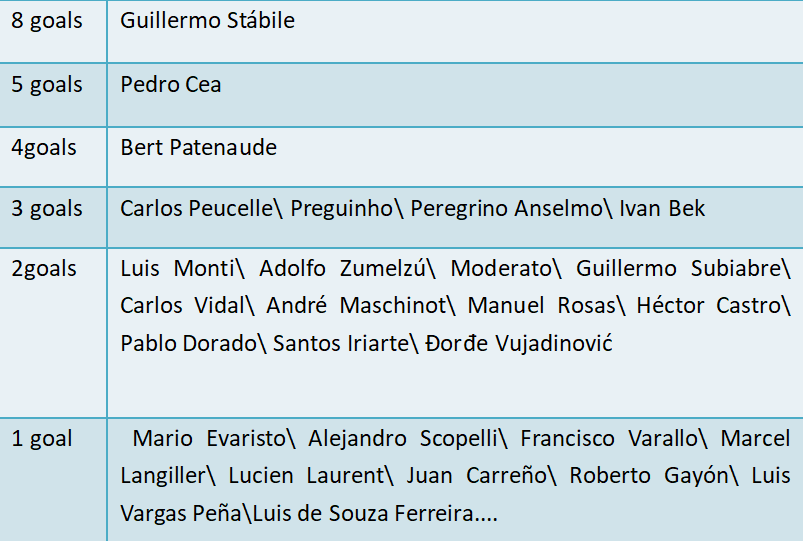The first World Cup: 1930 Uruguay World Cup
As a football fan, after watching so many World Cups, I believe you must pay special attention to the information related to the World Cup. To some extent, you should have become a "football expert". But what do you know about the first World Cup, no matter how little, today we are going to discuss the first World Cup in 1930.
Basic Information
❤ When does the world cup start?
As I said above, the first World Cup was held in 1930.
❤ Where was the world cup in 1930?
The answer to this question is well known, the first World Cup was held in Uruguay.
❤ Who won the first world cup 1930?
Uruguay.
Background
Italy, Sweden, the Netherlands, Spain, Hungary, and Uruguay all submitted applications to host the event, but Uruguay finally passed the application. But even if the World Cup was allowed to be held, there are still many problems to be solved.
At the time of the event, there was an economic depression in Europe. Everyone wanted to keep their jobs so they can survive in that environment. Players are no exception, many European players were reluctant to travel long distances away from their countries because of travel costs. They were afraid of losing their jobs - after all, playing football for a living had become the norm for football players at the time.
Besides, the World Cup's regulations allowing professional players to participate have also caused a lot of controversy and disgust. Because before the establishment of the World Cup, football was only an event in the Olympic Games, and in the traditional sense, only amateur players were allowed to participate in the Olympic Games. England, Italy, Spain, Germany and the Netherlands missed the first World Cup due to financial problems (they were all strong European teams), while Denmark and Germany refused to participate due to regulations. For a moment, it seemed that all teams were reluctant to participate in the first World Cup.
Things took a turn for the better, however, and when Uruguay offered to help pay for the trip, aside from some countries that had already volunteered, Remit persuaded Belgium, France, Romania and Yugoslavia to come to the tournament. In Romania, King Carroll hand-picked the players and promised not only to give them three months off, but the players would still be hired when they returned. In the end, thirteen teams (seven from South America, four from Europe, and two from North America) took part.
Team
❤ South America
Flag of ArgentinaArgentina (ARG)
Flag of BoliviaBolivia (BOL)
Flag of BrazilBrazil (BRA)
Flag of ChileChile (CHI)
Flag of ParaguayParaguay (PAR)
Flag of PeruPeru (PER)
Flag of UruguayUruguay (URU)
❤ Europe
Flag of BelgiumBelgium (BEL)
Flag of FranceFrance (FRA)
Flag of Romania Romania (ROU)
Flag of YugoslaviaYugoslavia (YUG)
❤North and Central America
Flag of MexicoMexico (MEX)
Flag of United StatesUnited States (USA)
Venue
All matches are played in three different stadiums in Montevideo: Estadio Centenario, Estadio Pocitos and Estadio Parque Central.
The Estadio Centenario, with a capacity of 90,000 people, was designed by Juan Scasso and was the main stadium for games at the time. It was built both for the game and to celebrate the centenary of Uruguay's independence, and is called "the temple of football" by Rimet. However, construction progress was delayed due to the rainy season, so Centenario was not officially commissioned until five days after the competition began.
So early games had to be played at the 20,000-capacity Parque Central and Pocitos. The Estadio Pocitos Stadium was built in 1921 as the home of the Penarol Club. The first match of the 1930 World Cup (France's 4-1 victory over Mexico) was held here, and it was in this match that Frenchman Lucien Laurent scored the first goal in World Cup history.
The history of Estadio Parque Central Stadium can be described as bumpy. In 1911, the stadium was almost completely rebuilt after it was destroyed by fire; the second reconstruction was in 1944; thirty years later (1974), the stadium suffered another fire, which burned down part of the buildings. The most recent renovation was in 2005 and the renovation was designed to meet international football standards.
Something happened in the World Cup
In the first round, France's Lucien Laurent scored the first goal of the World Cup. In the second game, the French team lost 1-0 to Argentina due to the referee ending the game 6 minutes early. The point of contention was when referee Almeida Rêgo blew the whistle just before French striker Marcel Langiller's goal, but there was still time left. The tournament only resumed after French players protested. France finally lost by one goal. Argentina's second match against Mexico was awarded the first penalty in World Cup history.
By the time of the final Argentina-Chile match in the group, the game had spiraled out of control. After the two players clashed, most of the two teams were involved in a major scuffle. The game continued after half-time, with Argentina winning both the match and the group.
Argentina, Uruguay, the United States, and Yugoslavia each won their respective groups to qualify for the semi-finals. After two "massacres" in the semi-finals, Uruguay and Argentina advanced to the final. In the final, hosts and pre-tournament favourites Uruguay defeated Argentina 4–2 in front of a crowd of 93,000 people, and became the first nation to win the World Cup.
The champion team of Uruguay
♡ Enrique Ballestero (Goalkeeper)
♡ Ernesto Mascheroni (Defender)
♡ Joséo Nasazzi (Defender)
♡ José Leandro Andrade (Midfielder)
♡ Lorenzo Fernández (Midfielder)
♡ Álvaro Gestido (Midfielder)
♡ Héctor Scarone (Forward)
♡ Pablo Dorado (Forward)
♡ Pedro Cea (Forward)
♡ Santos Iriartre (Forward)
♡ Héctor Castro (Forward)
♡ Head coach: Alberto Suppici
Goalscorers
With eight goals, Guillermo Stábile was the top scorer in the tournament. In total, 70 goals were scored by 37 different players, with only one of them credited as an own goal.

LATEST STORIES